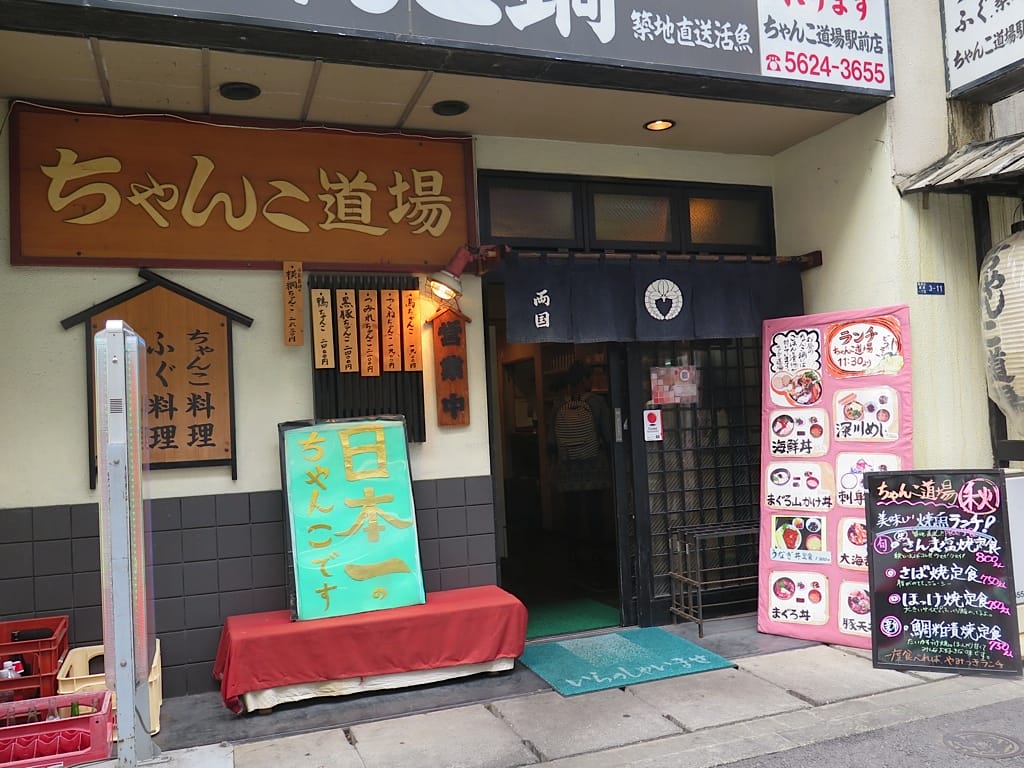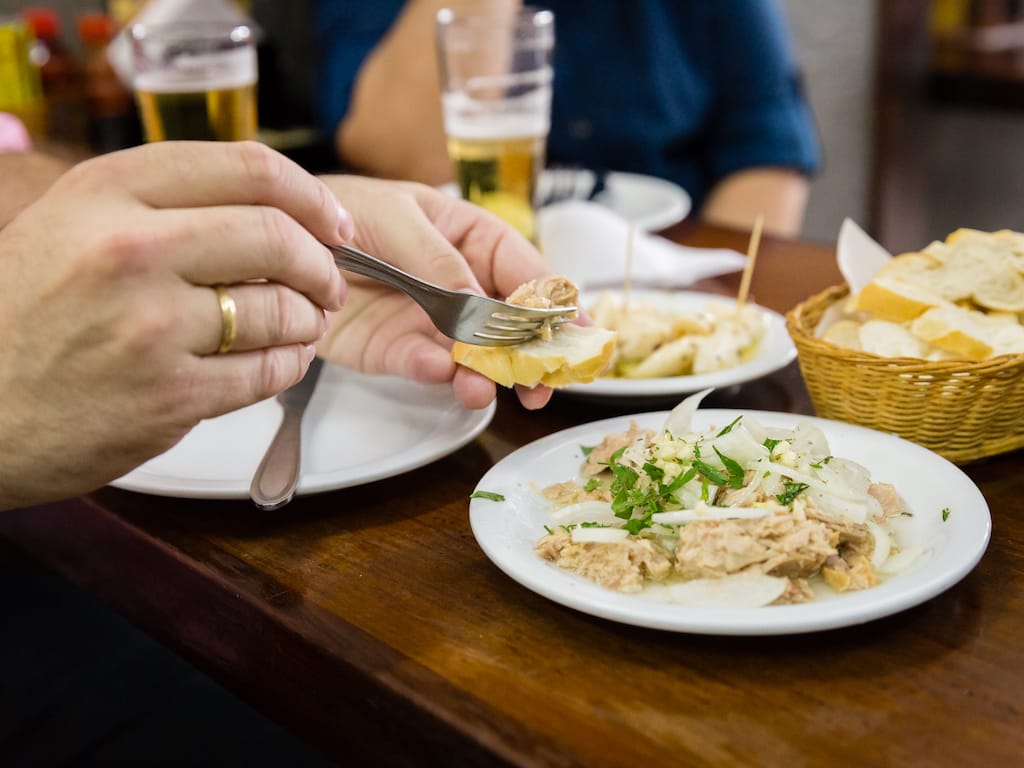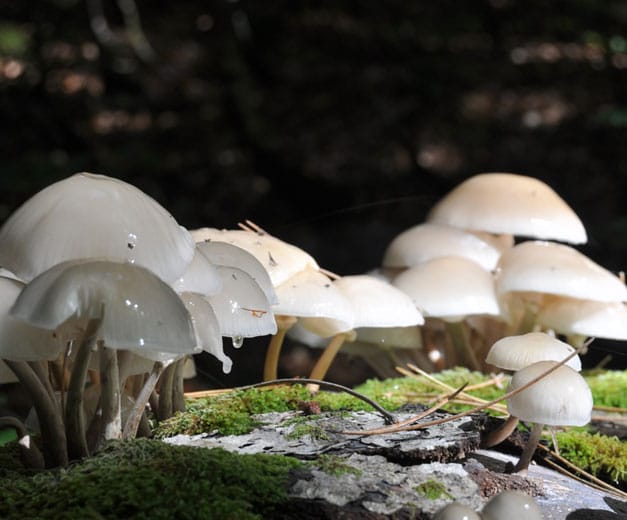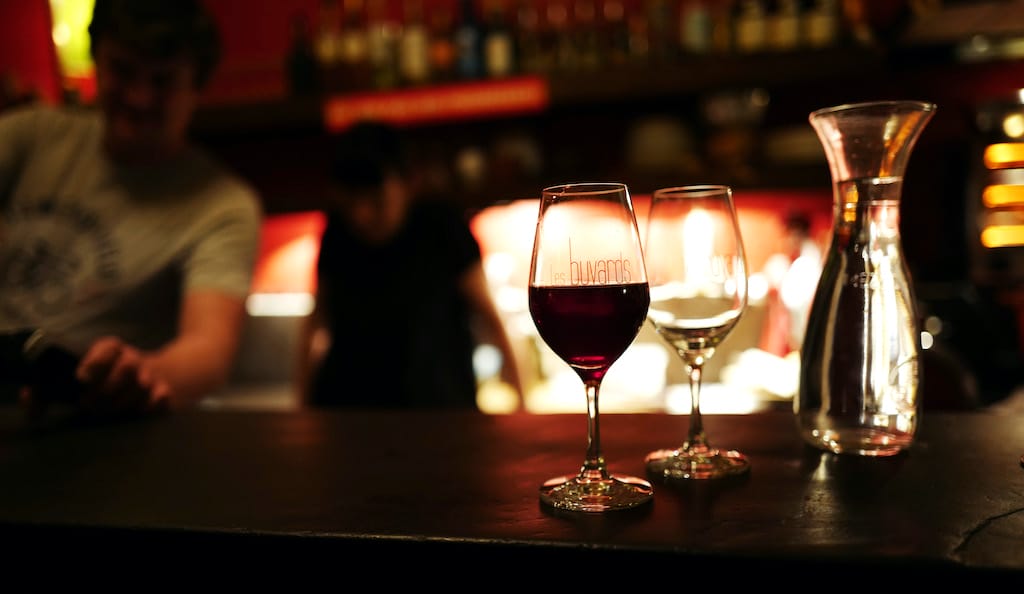It’s difficult to imagine a job where a major skill set is eating a vast amount of food and becoming as large as possible. Yet sumo wrestlers, in an effort to bulk up and to be able to throw their weight around in the ring, consume enormous amounts of protein-rich, calorie-heavy meals – primarily in a dish called chanko nabe (a one-dish hotpot) – hoping to do just that. At Chanko Dojo, diners are encouraged to fill up as much as possible as they soak up sumo culture. (For another eatery devoted to wrestling, read our review of this Mexico City spot.)
Sumo wrestling is often considered a competitive form of Japanese martial art. Two rikishi (wrestlers) stand in the center of a circle within a sand and clay dohyo and attempt to force each other out of the ring or to the ground. The main elements of a Shinto-inspired sumo bout are skill, strength and usually weight. Thus, a sumo wrestler wants to become as big and imposing as he can.
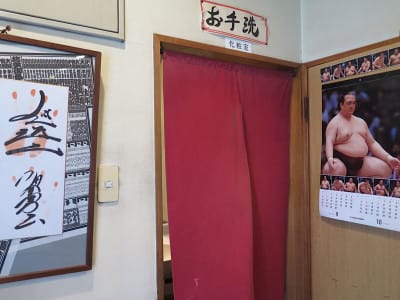 The Ryogoku section of Tokyo is not only the location of the Edo-Tokyo Museum, but also of the Ryogoku Sumo Hall and surrounding outgrowths of sumo life, including a sumo museum and a variety of restaurants serving typical food eaten by sumo wrestlers. Nestled among the restaurants under the Oedo line train tracks is Chanko Dojo, a friendly hole-in-the-wall spot welcoming hungry visitors and locals who want to fill up sumo-style on the many variations of chanko nabe and other characteristic dishes. Live sumo competitions are held during only three months each year, although it’s always possible to visit a sumo heya, or training stable. Barring that, a perfect place to begin to explore Japanese sumo culture and fill your stomach is at Chanko Dojo.
The Ryogoku section of Tokyo is not only the location of the Edo-Tokyo Museum, but also of the Ryogoku Sumo Hall and surrounding outgrowths of sumo life, including a sumo museum and a variety of restaurants serving typical food eaten by sumo wrestlers. Nestled among the restaurants under the Oedo line train tracks is Chanko Dojo, a friendly hole-in-the-wall spot welcoming hungry visitors and locals who want to fill up sumo-style on the many variations of chanko nabe and other characteristic dishes. Live sumo competitions are held during only three months each year, although it’s always possible to visit a sumo heya, or training stable. Barring that, a perfect place to begin to explore Japanese sumo culture and fill your stomach is at Chanko Dojo.
We visited recently, and a woman waiting tables ran to greet us. “Only Love,” an iconic song from the ’80s rock band Hound Dog, wafted over the rooms. It had probably been playing since the restaurant opened 30 years ago. The walls of the two very basic rooms are covered with photographs of sumo wrestlers, sumo schedules and autographs. The front room has small tables, but we prefer the large platform of tatami mat seating in the back, fronting the open kitchen.
Chanko is a form of Japanese nabemono, classified as a do-it-yourself hotpot dish with various foods cooked in a broth. There are no set ingredients for chanko nabe except lots of protein. The dashi broth can be made from just kombu seaweed and katsuobushi (dried bonito), or it can have the addition of chicken stock. The aim of cooking chanko nabe is to throw every protein available into the pot. Various vegetables and other materials are added for flavoring and texture.
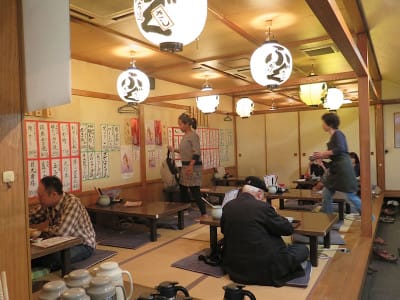 At Chanko Dojo the menu has pictures of the various nabe. We chose their signature yokozuna, or grand champion. It is served for one, but at a bit under US$25, it can easily feed two, following some small appetizers. In accordance with the Japanese way of drinking – toriaezu biiru, “we begin with beer” – we ordered draft beer to get the dinner going. While waiting for our food, we watched other diners trying to hoist themselves up from the floor after eating their massive meals.
At Chanko Dojo the menu has pictures of the various nabe. We chose their signature yokozuna, or grand champion. It is served for one, but at a bit under US$25, it can easily feed two, following some small appetizers. In accordance with the Japanese way of drinking – toriaezu biiru, “we begin with beer” – we ordered draft beer to get the dinner going. While waiting for our food, we watched other diners trying to hoist themselves up from the floor after eating their massive meals.
The waitress set a dish of glistening sashimi in front of us with tuna, shimaaji horse mackerel and a white fish. She then placed dishes with a wedge of snowy tofu and a rainbow of pickles off to the side.
It is sanma season, and this Pacific mackerel-type fish was on the menu on our visit, and the waitress recommended that we have one. The salt-flaked skin of the just-grilled fish was melty over its sardine-like flesh and just gorgeous. It was served with grated daikon, rice, miso soup and pickles and was the perfect dish for a lighter eater.
For the main event, the waitress returned to ignite the small stove embedded in the center of our table and placed on it a vessel filled with hot broth. The chanko nabe ingredients were quickly dealt onto the table and the waitress gestured that she would show us how to cook the nabe. There was a plate with minced white fish and ground chicken and a bowl filled with the rest of the hotpot ingredients trying to balance themselves in the crowd: chunks of chicken, a slab of salmon, scallops, shrimp, half a small crab, an egg yolk, white fish, konnyaku yam, shimeji mushrooms, fried tofu, mizuna greens and scallions.
We began cooking the nabe by scooping the minced fish and chicken into spoon-sized balls and sliding them into the broth to cook. Next we used long chopsticks to toss the rest of the ingredients into the pot. We ordered sake and sat back to watch our dinner come together.
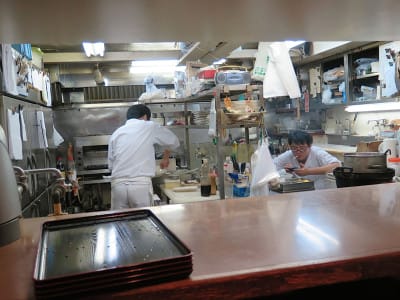 At Chanko Dojo diners don’t have to follow the etiquette of the sumo stable, where the higher-ranking wresters get to pull their favorite ingredients from the pot first. When everything looked ready to eat we dove in and scooped out what looked good to us. This kind of protein is not the only thing that adds to the enormous girth of sumo wrestlers; the waitress also distributed large bowls of rice around the table, and as the proteins were pulled from the hotpot they were washed down by more beer, sake and rice. It’s the perfect regimen to bulk up for the ring, or, for us mere mortals, to bulk up for winter.
At Chanko Dojo diners don’t have to follow the etiquette of the sumo stable, where the higher-ranking wresters get to pull their favorite ingredients from the pot first. When everything looked ready to eat we dove in and scooped out what looked good to us. This kind of protein is not the only thing that adds to the enormous girth of sumo wrestlers; the waitress also distributed large bowls of rice around the table, and as the proteins were pulled from the hotpot they were washed down by more beer, sake and rice. It’s the perfect regimen to bulk up for the ring, or, for us mere mortals, to bulk up for winter.
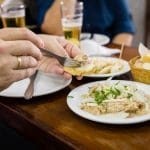 November 10, 2017 Fresh Catch in Copacabana
November 10, 2017 Fresh Catch in Copacabana
Adega Pérola, a bar that sticks close to its Iberian roots, offers more than 50 types of […] Posted in Rio October 21, 2014 The Fungus Among Us
October 21, 2014 The Fungus Among Us
Editor's note: We are sorry to report that MushRoom has now closed.
For our second […] Posted in Athens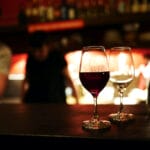 May 27, 2022 Les Buvards
May 27, 2022 Les Buvards
Update: This spot is sadly no longer open.
One of the many charms of daily French […] Posted in Marseille
Published on November 05, 2015
Related stories
November 10, 2017
RioAdega Pérola, a bar that sticks close to its Iberian roots, offers more than 50 types of tapas from both land and sea. One of the best is the fresh tuna marinated in olive oil and served with onions, best eaten with your hands.
October 21, 2014
AthensEditor's note: We are sorry to report that MushRoom has now closed. For our second installment in Mushroom Week, we go to Athens, where locals, who have never been the biggest fans of fungus, are starting to come around to the pleasures of cooking and eating mushrooms. It’s October and mushroom season in many parts…
May 27, 2022
MarseilleUpdate: This spot is sadly no longer open. One of the many charms of daily French life is the ability to eat and drink well without needing beaucoup bucks. The best place to put this in practice is at a bar à vin. Since one never drinks alone in France – literally and figuratively – these bars…







































